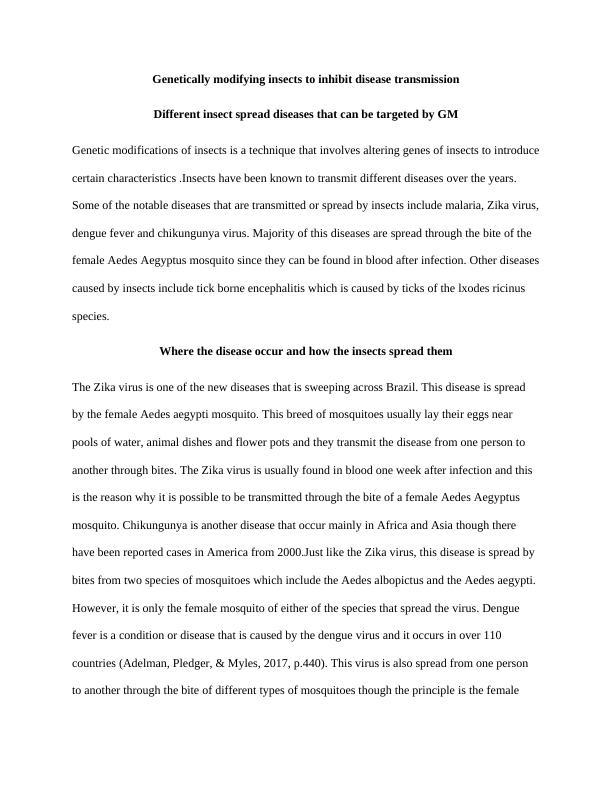Genetically modifying insects to inhibit disease transmission
7 Pages1497 Words492 Views
Added on 2023-06-04
About This Document
This article discusses the technique of genetically modifying insects to inhibit the transmission of diseases such as malaria, Zika virus, dengue fever, and chikungunya virus. It compares this technique to other options such as vaccination, sanitation, and use of pesticides. The article also explains the different techniques available for genetic modification, successful trials, and potential future scopes.
Genetically modifying insects to inhibit disease transmission
Added on 2023-06-04
ShareRelated Documents
End of preview
Want to access all the pages? Upload your documents or become a member.
Dengue Fever: Symptoms, Transmission, and Global Burden
|14
|9196
|318
Dengue Fever: Transmission, Global Burden, and Manifestations
|17
|9743
|166
Diseases Ddrugs And Complications
|13
|3883
|23
Chikungunya and Dengue Fever Assignment PDF
|7
|1578
|130
Accounting Assignment Solution
|7
|1443
|34
Essay On Infectious Diseases
|3
|349
|105



